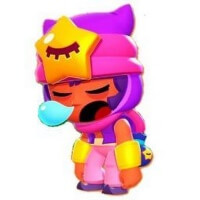Сжать текст до 5-7 предложений не потеряв основную мысль Today twenty-eight countries belong to the European Union. More than 507
million Europeans have the right to live in, work in or travel to other EU
countries. Millions of people enjoy friendly contact with their neighbours
across borders. Governments across Europe pass the same laws about
employment, food, transport, health and the environment. The EU is also the
largest free market in the world. A typical European supermarket is full of
fresh fruit, vegetables, cheese and meat that come from all over Europe.
Twelve countries even use the same currency, the euro. In fact, the European
Union has a very big influence over our lives, but most of us don’t even
notice it. But if we look at Europe just three generations ago, we start to 942-Fu
understand that the story of the EU is even more surprising. In 1945, Europe
had just experienced the most terrible war in history. Many historians believe
that at least forty million people were killed, although such numbers are very
hard to calculate. At the end of the war millions were homeless and much of
Europe was in ruins. In fact, famine was a bigger problem in 1947 than it was
during the war years. Worst of all, many countries still didn’t trust each other.
It is perhaps a surprise to lear that the first politician to suggest “a United
Europe’ after the war was Winston Churchill, the British Prime Minister
during the war years.
In September 1946, during a meeting in Swiertand, he said that Europeans
should come together to create a “United States of Europe’. However, most
people, especially in Britain, thought that Churchill’s ideas were shocking or
even absurd. Eight months later a huge conference was organised in the
Netherlands. Eight hundred important European academics and politicians
were invited. Pethaps the most powerful speech was made by Salvador de
Madariaga, a Spanish politician and writer:
This Europe must be born, And she will,
when Spaniards say ‘our Chartres’,
Englishmen say “our Cracow’, Italians ‘our
Copenhagen’ and Germans “our Bruges’
Then Europe will live.
But when de Madariaga spoke these words in 1947, it was already too late.
Despite the fine words and emotional speeches, the Netherlands conference
couldn’t save Europe - it was already divided in two, But the idea of “a,
United Europe’ didn’t die completely. A French politician, Robert Schuman,
believed that the only way that France and Germany could become good
neighbours again was by cooperating economically. In 1951 six countries
agreed to regulate trade, prices and production of coal and steel. The
experiment was a success, and in 1957 the six countries signed the Treaty of
Rome and created the European Economic Community (in 1993, the EEC
changed its name to the European Union). Nine more countries joined the
organisation between 1973 and 1992 and another ten countries became
‘members in 2004, followed by two more in 2007 and one more in 2013
Perhaps de Madariaga’s dream will come true one day afterall
Ответы на вопрос:
ответ:
riga, city (population in 1992 901,700), capital of latvia, on the daugava (western dvina) river near its entry into the gulf of riga. a major baltic port, it is also a rail junction, a military base, and an industrial and cultural center. among riga's industries are machine building, metalworking, shipbuilding and repairing, woodworking, food processing, and the manufacture of diesel engines, streetcars, chemicals, pharmaceuticals, electrical apparatus, radio and telephone equipment, meteorological instruments, textiles, building materials, and paper.
points of interest
riga is the site of a university (established in 1919), the latvian academy of sciences (1946), and numerous other educational and cultural institutions. the old section, or hansa town, of riga is circled by a park-lined moat and includes the ancient castle of the livonian knights (rebuilt at various periods), the 13th-century lutheran cathedral (rebuilt 16th and the parliament building (19th the famous hanseatic schwarzhaupter house (15th cent.) and the church of st. peter with a steeple 412 ft (126 m) high were largely destroyed during world war ii. the old town, with its narrow, cobbled streets lined with gabled dwellings and warehouses, has retained much of its medieval character.
history
the site had long been occupied by baltic tribes when the monk meinhard built a monastery c.1190 among a settlement of livs. german merchants established a community at riga in 1158. bishop albert of livonia transferred his seat there in 1201 and founded the livonian brothers of the sword , or livonian knights, a german military religious order whose mission was to spread christianity in the baltic region. the knights also established a trading station at riga. the city, which became an archiepiscopal see in 1254 and a member of the hanseatic league in 1282, developed into a major commercial and handicraft center. its favorable strategic location made it an intermediary in russian trade with western europe. although it belonged to the domain of the livonian knights, riga maintained a semi-independent existence under its archbishops and german merchants, and it controlled a large part of livonia.
riga's acceptance of the reformation in 1522 definitively ended the power of the archbishops there. after the dissolution of the livonian order in 1561, riga was briefly independent and then passed (1581) to poland, despite attempts by ivan iv of russia to seize it. polish efforts to reintroduce catholicism made the capture of riga in 1621 by king gustavus ii of sweden a welcome event for the protestant citizens. the swedes granted self-government to the city. captured (1710) by czar peter i during the northern war , riga and the rest of swedish livonia were ceded to russia by the treaty of nystadt in 1721. having declined during the 17th cent., riga's commercial importance revived in the 18th and particularly with the coming of the railroad in the 19th. the city became second only to st. petersburg as russia's leading port and was the center of europe's timber trade.
a leading russian industrial center from the second half of the 19th cent., riga had the third largest number of industrial workers (after moscow and st. petersburg) by the 1890s. the city was a stronghold of the russian social democratic party and played an important role in the revolution of 1905. german troops occupied riga in 1917. after world war i, the independence of latvia was proclaimed at riga, which became the new country's capital.
when latvia was incorporated into the ussr in 1940, riga was made the capital of the latvian ssr. during world war ii the city was again occupied (1941) by the germans, from whom it was retaken (1944) by the soviet army. the soviet union encouraged non-latvian migration to the city. by 1975 less than 40% of its inhabitants were ethnically latvian. riga again became the capital of independent latvia in sept., 1991.
Популярно: Английский язык
-
I speak – he ….(я говорю – он говорит) 2. I go – he ….(я иду – он идёт)...
 bandygan66619.08.2021 07:39
bandygan66619.08.2021 07:39 -
Нужно поставить глагол в правильной форме...
 Hahanicejoke01.12.2022 21:28
Hahanicejoke01.12.2022 21:28 -
Раскройте скобки. At this time yesterday Mary (sit) at the cinema. She...
 2291627.11.2021 07:20
2291627.11.2021 07:20 -
Our country is rich ... forests...
 asaparova8025.12.2021 14:41
asaparova8025.12.2021 14:41 -
Нужно написать о том как вы готовите любимое блюдо, минимум 80 слов...
 НикаНик111117.06.2023 19:37
НикаНик111117.06.2023 19:37 -
Выберите Present Simple or Present Continues. ЗА ВСЕ ПРАВИЛЬНЫЕ ОТВЕТЫ...
 Aslihaaan20.03.2022 21:45
Aslihaaan20.03.2022 21:45 -
N18 music on No, they don t. They lishten to Saturday. No, they don t....
 catxripunowa24.06.2022 14:38
catxripunowa24.06.2022 14:38 -
пришлите ответ на 5 вопросов в верху...
 111dashamm63916.07.2021 04:37
111dashamm63916.07.2021 04:37 -
2 Look at the pictures and sentences. Write the correct sentences. I don...
 minickotik12.03.2022 03:05
minickotik12.03.2022 03:05 -
The aand of Decamber Taski 1. True 2 True a false a false Tasks Rio2 american...
 katizh18.12.2022 11:57
katizh18.12.2022 11:57
